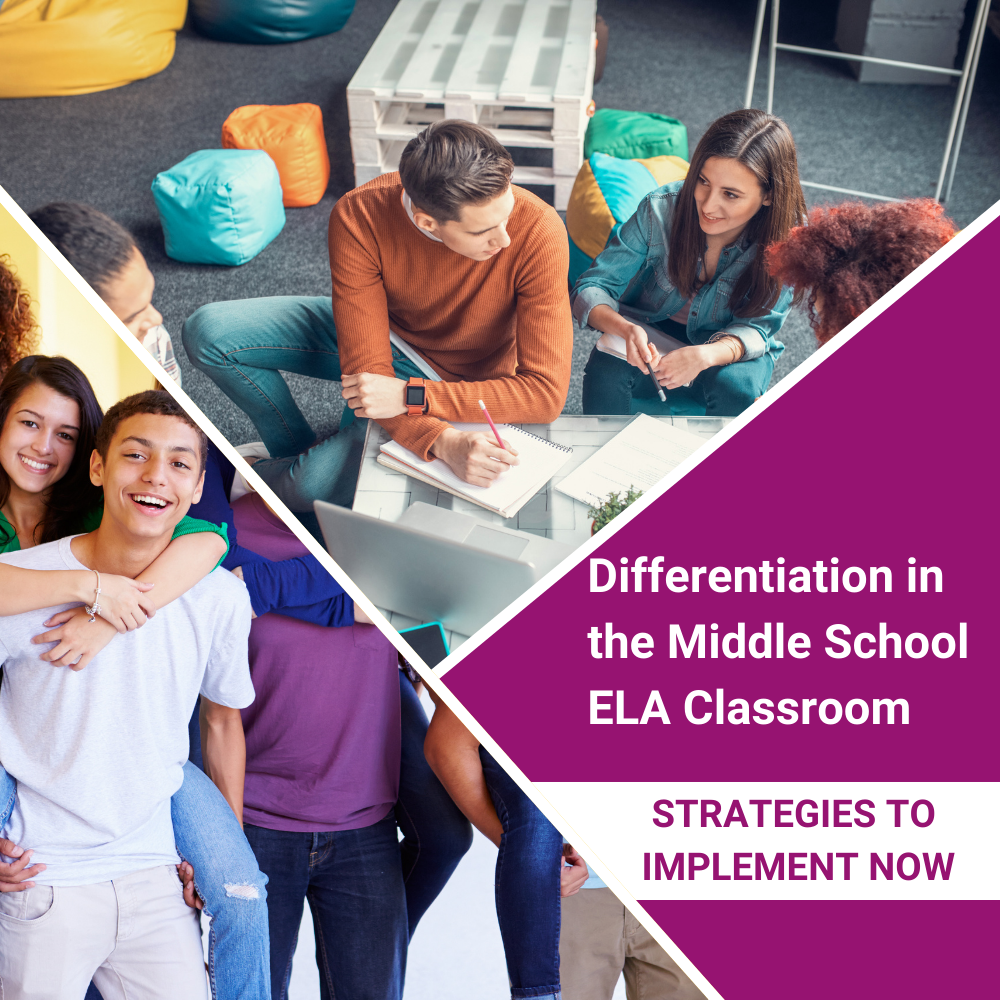Three Ways to Elevate Learning for Every Student through Differentiation: The Missing Link in Middle School ELA.
In the context of a charter school with a 1:33 teacher-student ratio and 55-minute class periods, differentiation emerges as a crucial strategy to address the diverse needs of each student. Differentiation involves tailoring content, process, and products based on individual student data, readiness, and interests, offering a responsive teaching approach.
What is Differentiation?
Differentiation is about adjusting curriculum content, learning process, or mastery products based on student needs. It is a responsive teaching approach to meet all students where they are based on data, student readiness, and student interest. The three main ways to differentiate for students are content, process, and product.
- Content: What students are ready to learn based on student data.
- Process: How students are ready to learn including where in the classroom that takes place.
- Product: What students are ready to produce to show mastery
Differentiating Content in ELA
Content differentiation focuses on what students learn. Often, standard curriculum materials primarily cater to average-performing students (Tier 1), leaving advanced and Tier 3 students’ needs unmet. By varying the complexity of texts and integrating technology and advanced projects, content can be adapted to suit all learners.
Through my practice, I have found some of the most effective ways for me to use my scripted curriculum while meeting all three data groups (tier 1, tier 3, and advanced) in my class listed in the table below:
| Tier 3 Content | Tier 1 Content | Advanced Content |
| *Lower lexile texts *Visual aids *Vocabulary introduction *Build background knowledge *Technology or blended learning | *Scripted curriculum | *Advanced texts Comparative text *Historical context project *Extension or choice boards *Extended vocabulary |
Differentiating Process in ELA
Process differentiation is about how and where learning occurs. I often felt that tier 1 instruction was holding my advanced students back, while my tier 3 students were falling behind. To help with this I began creating different opportunities for the three data groups in my room. I implemented a cohort support structure for my advanced students who were able to lean on each other for content support. They worked independently in small groups to self pace through the lesson. With about ⅓ of the class working independently I was about to reach more tier 1 and tier 3 students for whole group and small group instruction. Stations also worked better with this amount of students.
By creating varied learning opportunities, such as small group work for advanced students and leveraging special education resources for Tier 3, each student can engage in a manner that suits their learning style. Methods like stations flipped classrooms, and inquiry-based learning offer diverse ways for students to engage with the material. Check out the table below for other process ideas in the middle school classroom based on data groups.
| Tier 3 Process | Tier 1 Process | Advanced Process |
| *Leverage the special education teacher for small groups *Stations *Direct instruction *Technology or blended learning | *Whole group *Direct instruction *Stations | *Flipped classroom *Student-paced or led *Leveled reading assignments *Homogeneous grouping with other advanced students *Inquiry-based learning *Project-based learning |
Differentiating Products in ELA
Product differentiation pertains to how students demonstrate their understanding. This usually takes place with formative assessments such as exit tickets, quizzes, discussions, and comprehension questions. This can be achieved through various means, such as providing sentence stems for Tier 3 students, guiding Tier 1 students to specific text parts, or setting advanced criteria for success in writing for advanced learners. Oral responses, graphic organizers, and independent projects can also serve as mediums for students to exhibit their mastery of the content.
The table below refers to some of the ways students show mastery in my ELA classroom or the support they get to help them reach mastery.
| Tier 3 Product | Tier 1 Product | Advanced Product |
| *Sentence stems *Direct students to specific parts of the text *Graphic organizers *Oral response or projects | *Advanced criteria for success in writing *More evaluation and analysis in their response *Independent projects |
In summary, effectively implementing differentiation in the Middle School ELA classroom involves a thoughtful blend of varying content, process, and product strategies to meet the unique needs of each student. This approach not only enhances academic performance but also fosters a more inclusive and supportive learning environment.
Check out these differentiated resources on TPT: Blooms Taxonomy Aligned Analyzing Narrative Point of View Winter Themed Gr 6-8 (teacherspayteachers.com)
Other teacher resources you may enjoy: 10 Essential SEL Resources Middle School Teacher Toolkit (toobookedup.com)

One thought on “Three Ways to Elevate Learning for Every Student through Differentiation: The Missing Link in Middle School ELA.”
Comments are closed.